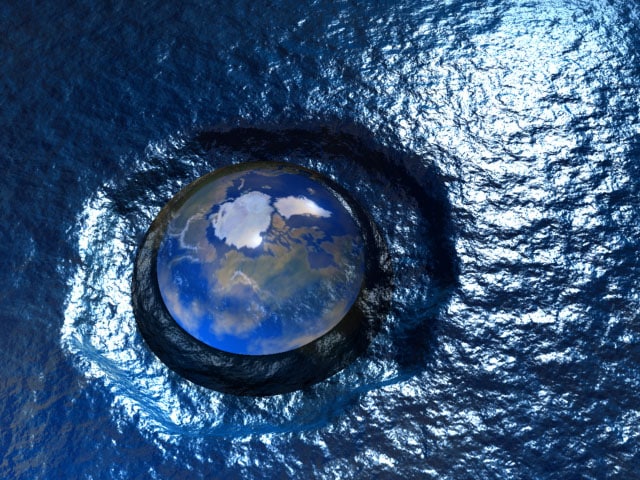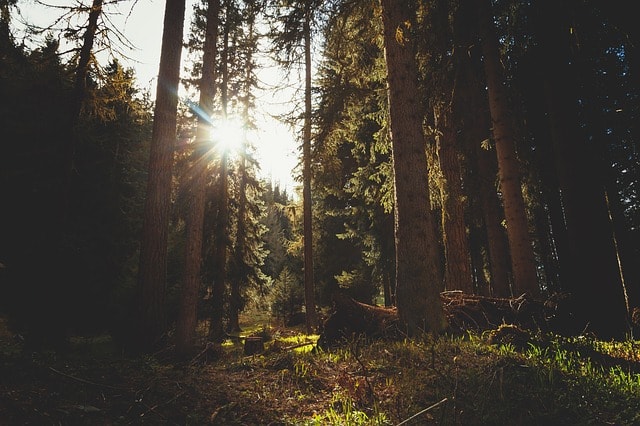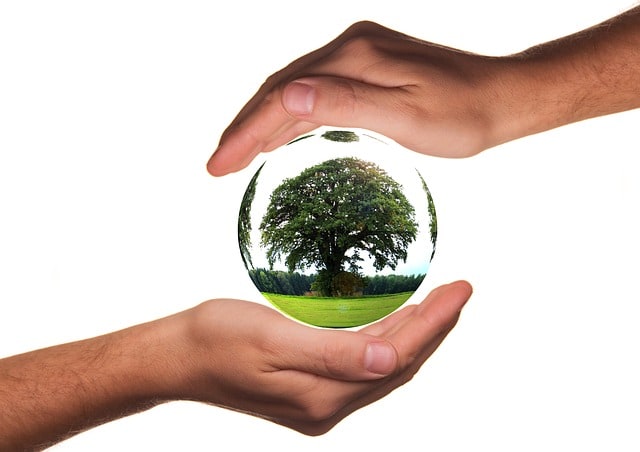40 Amazing Climate Change Facts

Climate change and global warming are hot topics these days. Studies conducted by various scientists suggest that climate change is happening and it could have devastating and damaging effects on human life. So, what is climate change? Due to burning of fossil fuels, the atmospheric concentrations of carbon dioxide have increased significantly. Though presence of carbon dioxide (CO2) and other greenhouse gases is necessary to produce greenhouse effect in order to sustain life but an enhanced greenhouse effect is trapping more of the sun’s heat pushing the climate system off the track. Since industrial revolution, the emissions of greenhouse gases from vehicles, coal power plants and other man-made sources has increased significantly. Climate Change is a huge issue in our world today and we should learn as much as possible about it.
As a result of increase in the greenhouse gases in the atmosphere, global average temperature have risen in both land and the oceans. The effects of climate change has already started occurring in the form of melting of polar ice caps, rise in sea level, stronger storms, extinction of species, Here are some 41 facts of climate change to start you off.
1. Fact: NOAA (National Oceanic and Atmospheric Administration) and other agencies all agree that climate change is real and is caused primarily by human activity.
2. Fact: Global average temperature is currently 14°C. Scientists predict that it could go up another 6°C in the 21st century if not stopped.
3. Fact: Global average temperature is calculated using multiple temperature records around the world gathered by NOAA and verified by other agencies including NASA.
4. Fact: Normally, sunlight radiates through the Earth’s atmosphere and warms it’s surface, then bounces back out to space. Global warming occurs when the heat is trapped by greenhouse gases and, instead of radiating back out, continues to warm the Earth’s surface, driving temperatures up.
5. Fact: Although the Earth has seen higher temperatures than those of today, the rate of warming has now destabilised and accelerated, creating conditions in which humans will find it increasingly difficult to thrive.
6. Fact: 2014 was recorded as the world’s hottest year in history. While the rise in temperature was worldwide, the hottest spots included western US, eastern Russia stretching into Alaska, spots in the South American interior, and most of Europe all the way down to northern Africa.
7. Fact: Solar activity definitely affects the Earth’s temperature as it is the main source of natural energy. However, scientists say that current climate change isn’t only due to solar activity increase because instead of a uniform warming around the globe, there is warming in certain areas and cooling in others.
8. Fact: The upper atmosphere of the Earth is cooling down while the lower atmosphere is heating up, due to heat being trapped in the lower atmosphere by greenhouse gases.
9. Fact: Cold weather or snow doesn’t mean global temperatures aren’t rising – just the opposite. Warmer climates mean more water vapor in the air, which in turn means more rain and snow in the long run.
10. Fact: The greenhouse gases are :
- Water Vapor – occurs normally in the atmosphere self-perpetrating
- Nitrous Oxide – generated by soil cultivation, fossil fuel use, nitric acid production and biomass burning.
- Methane – generated by natural processes and human activities like rice cultivation, domestic livestock manure management and waste decomposition.
- Carbon Dioxide – A component of Earth’s atmosphere generated by natural processes including volcanic eruptions and respiration also generated by human activities, especially fossil fuel burning.
- Chlorofluorocarbons (CFCs) – a man-made compound that was used in much manufacturing and other processes well-regulated now.
11. Fact: Greenhouse gases like carbon dioxide raise the Earth’s temperature, which raises the level of water vapor in the air. Water vapor itself is a greenhouse gas that raises temperatures further.
12. Fact: The ozone layer hole doesn’t have much to do with climate change. It is the thinning of the layer of ozone molecules in the atmosphere caused by chlorofluorocarbons that used to be used pervasively in manufacturing. The ozone layer blocks too many ultraviolet rays from reaching Earth.
13. Fact: While warming and cooling cycles are natural, many studies have shown that the warming observed in the past 50 years have been attributed to both human causes as well as natural climate variations.
14. Fact: The US is the highest contributor to greenhouse gases. In 2013, the most greenhouse gases were emitted by industrial activities – 29%. Transportation emitted the second most, followed by commercial and residential activities. Agricultural activities emitted the least, at 10%.
15. Fact: Deforestation releases nearly 15% of the carbon in the atmosphere.
16. Fact: We actually create carbon dioxide with the oxygen we breathe in, and then we breathe it out into the atmosphere. So we are literally contributing directly to climate change by just breathing.
17. Fact: Evidence of climate change includes increased heat and cold waves, droughts and storms resulting in more severe flooding. Melting sea ice causing raised sea levels is also another indicator.
18. Fact: Even a small rise in the sea level has far-ranging effects, swallowing acres of coastline, displacing countless humans and animals and destroying millions of dollars worth of property.
19. Fact: Before the end of the 21st century, sea levels have been slated to rise 7 to 23 inches, with sea levels rising the fastest along parts of the US East Coast.
20. Fact: Effects of climate change also include lower crop yield, slower stream flow, lower lake levels and more incidents of wildfire.
21. Fact: Ice in the Arctic region may melt by as early as 2040, forcing polar bears, walruses, belugas, narwhals, bowheads, caribou and wild reindeer into extinction.
22. Fact: One in six animal species are expected to be lost due to climate change. The first species lost was the Golden Toad. Hardest hit will be species that eat a limited range of food or those who live in fast-altering environments like deserts and the ocean.
23. Fact: More than a million species face extinction due to disappearing habitats, ocean acidification and changing ecosystems.
24. Fact: 2014 was the hottest year on record, surpassing the previous record set in 2010.
25. Fact: Many varieties of flora will also die out due to inhospitable environments – the most well known one being sea coral.
26. Fact: Climate change has increased the number and variety of pests that spread diseases such as dengue and malaria.
27. Fact: Climate change causes more than 600,000 deaths annually, some of them because of diseases caused by rising temperatures.
28. Fact: Disease is also spread by contamination of water transported to drought stricken areas.
29. Fact: Water borne diseases spread by floods have killed more than three million people since 2005.
30. Fact: Food prices have risen and will continue to rise by nearly 60% by 2030, due to the effects of climate change on crops and livestock.
31. Fact: Something can be done about climate change; be it on a large-scale level via governments, businesses and communities through to an individual effort to reduce greenhouse gas emission.
32. Fact: According to this, 99.84% of the land in the state of California is suffering from drought.
33. Fact: The Kyoto Protocol was agreed on in 1997 and 160 countries subsequently ratified it (fully integrated it into national law). The Protocol went fully operational in 2005 up until 2012 with 35 industrialised countries committed to reducing their carbon emissions.
34. Fact: In 2010, 141 countries around the world signed carbon reduction pledges as part of the Copenhagen Accord, aimed toward reducing carbon emission by 2020.
35. Fact: As a way to cope with the effects of climate change, agencies such as the WWF assist communities to adapt to and build resilience against it. One of their techniques is to reinforce buildings to better resist the elements, leading to less energy use and carbon emission.
36. Fact: Companies are starting to offset their emissions by supporting clean energy projects. Other ways for companies to clean up their carbon footprint are by assessing their emissions, eliminating all non-necessary carbon-intensive activities, cultivating energy-saving habits, and reviewing energy usage regularly.
37. Fact: Individuals can watch their home energy usage, eat mindfully, reduce, reuse and recycle and rethink their transportation options to help stave climate change.
38. Fact: WWF’s Climate Solutions suggest how we can generate enough energy to support our growing global population in a way that does not impact climate change as much. The Solutions include making low-emissions technologies widely available, developing flexible fuels and using low-carbon gas in place of high-carbon coal.
39. Fact: Since the beginning of the Industrial Revolution, the acidity of surface ocean waters has increased by about 30 percent.
40. Fact: There are more Greenhouse gases in our planet than at any point in the past 650,000 years ago.
There are many things to consider when it comes to climate change, but it seems that there is only one important thing to act on … stopping it.
Sources: EPA , Climate change facts , Climate change info






